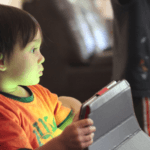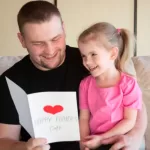Nighttime potty training is one of the final steps in your toddler’s journey toward full independence. Many parents wonder, “How do I help my child stay dry through the night?”
Toddler Potty Training at Night Made Easy | Gentle Hacks for Dry, Peaceful Nights

The good news is—you can do it with patience, gentle guidance, and the right strategy. In this guide, we provide you with expert-backed, parent-approved tips to make nighttime potty training for toddlers smooth, stress-free, and successful.
Whether your child is already dry during the day or you’re just beginning the process, these tried-and-tested nighttime potty training tips will help your toddler transition confidently and comfortably.
Why Nighttime Potty Training Is Different from Daytime Training
Nighttime potty training for toddlers involves more than just extending daytime skills into the night. While daytime success relies on communication and awareness, nighttime dryness depends on your child’s physical development—particularly their bladder capacity and the brain’s ability to send a wake-up signal when it’s time to pee.
This means it’s perfectly normal for nighttime training to take longer. And yes, some kids might be day-trained for months before they stay dry through the night.
Signs Your Toddler Is Ready For Nighttime Potty Training
Every child is different, but here are a few common signs to watch for:
- Wakes up with a dry or mostly dry diaper in the morning
- Stays dry during daytime naps
- Expresses awareness of nighttime accidents
- Shows interest in using the potty at night
- Has already mastered daytime potty training
If your toddler shows most of these signs, it may be time to start your nighttime toilet training journey.
Gentle Methods That Actually Work
Using gentle potty training methods can make the process less stressful for both you and your toddler. Here are a few key steps:
1. Establish A Consistent Bedtime Routine
A predictable toddler nighttime routine can signal the body it’s time to wind down. Include:
- A potty visit right before bed
- Limited fluids 1-2 hours before sleep
- A relaxing activity like reading or cuddling
2. Protect The Bed
Prepare for accidents:
- Use waterproof mattress covers
- Keep extra sheets and pajamas nearby
- Layer sheets (sheet, pad, sheet) for easy middle-of-the-night changes
3. Encourage Independence
- Keep a potty chair nearby
- Use night lights to help your toddler find the toilet
- Dress your child in easy-to-remove sleepwear
Nighttime Potty Training Tips That Make A Difference
Here are the best tips for nighttime potty training that have helped countless parents:
- Praise small wins (like staying dry for a few hours)
- Don’t punish or shame your child for accidents
- Wake your child for a dream pee if needed (optional and only short-term)
- Be consistent, but flexible
- Model patience and calmness
What To Do About Bedwetting
Bedwetting is very common and completely normal during nighttime potty training. Most kids outgrow it by age 7. Here are some bedwetting prevention tips:
- Avoid sugary drinks before bed
- Encourage regular daytime potty breaks
- Help your toddler pee twice before bed (e.g., after bath and just before sleeping)
- Use rewards like sticker charts to boost motivation
If bedwetting persists beyond age 6 or causes emotional distress, consult a pediatrician.
Potty Training Boys Vs. Girls At Night
While both boys and girls can learn nighttime potty training successfully, some studies show girls may achieve dryness sooner. That said, every child is unique.
Tips for Boys:
- Teach sitting first, then transition to standing
- Use targets or toilet training urinals for fun
Tips for Girls:
- Encourage proper wiping habits early
- Offer easy access to toilet paper and a step stool
Common Setbacks And How To Handle Them
1. Regression
Nighttime potty training regression happens! It could be due to illness, travel, or a big life change. Stay calm and return to basics.
2. Refusal To Use The Potty At Night
Make it fun! Use storybooks, stickers, or let your child choose their own potty chair.
3. Toddler Is Still Wetting The Bed Despite Training
Give it time. Talk to your pediatrician if your child is over 5 and still regularly bedwetting.
How To Potty Train At Night Without Pull-Ups
Potty training without pull-ups can work well for older toddlers. Here’s how to ease the transition:
- Let your child sleep commando (no diaper or pull-up)
- Use washable mattress protectors
- Offer comfort and reassurance after accidents
Pull-ups can sometimes confuse toddlers. If your child understands the difference, they might not need them.
Sample Nighttime Potty Training Schedule
| Time | Activity |
|---|---|
| 6:30 PM | Dinner (light fluid intake) |
| 7:00 PM | Bath & potty |
| 7:30 PM | Storytime and calming play |
| 8:00 PM | Final potty trip |
| 8:15 PM | Bedtime |
| 11:00 PM | Optional dream pee (if needed) |
Stick to the routine for a few weeks to build consistency.
Tools That Help (And What To Avoid)
Helpful Tools:
- Portable potty chairs
- Mattress pads
- Bedwetting alarms (for older toddlers if needed)
- Nightlights
Avoid:
- Harsh punishments
- Shame or blame
- Forcing overnight dryness before the child is ready
When To Seek Help
Nighttime potty training usually clicks between ages 3 to 5. But if your child is older and still consistently wets the bed, or shows signs of discomfort or low self-esteem, it’s time to talk to your doctor. There may be an underlying medical issue or sleep pattern challenge.
Conclusion
Nighttime potty training for toddlers takes time, love, and a lot of patience. Trust the process. Some nights will be messy—and that’s okay. Celebrate progress, support your child emotionally, and stick to a gentle, age-appropriate approach. Eventually, those dry mornings will come, and you’ll both feel proud of how far you’ve come.
You’ve got this, parent!
FAQs
1. What age should I start nighttime potty training?
Most children are ready between ages 3 to 5, but every child is different.
2. Is bedwetting normal during nighttime potty training?
Yes! It’s very normal and usually resolves on its own with time.
3. Should I wake my child up to pee at night?
Some parents find dream pees helpful. Try it for a few days and see if it helps.
4. How can I reduce accidents at night?
Limit fluids before bedtime, double-potty before sleep, and use waterproof bedding.
5. Are pull-ups necessary for nighttime potty training?
Not always. Some kids do better without them, especially if they confuse diapers with toilet training.
6. What if my toddler refuses to use the potty at night?
Make the experience positive and rewarding. Let them pick their own potty gear.
7. What products can help with nighttime potty training?
Nightlights, mattress protectors, and potty chairs close to bed can help.
8. How long does nighttime potty-training take?
It can take weeks or months. Be patient and don’t rush the process.
Join 25,000+ smart readers—don’t miss out!







